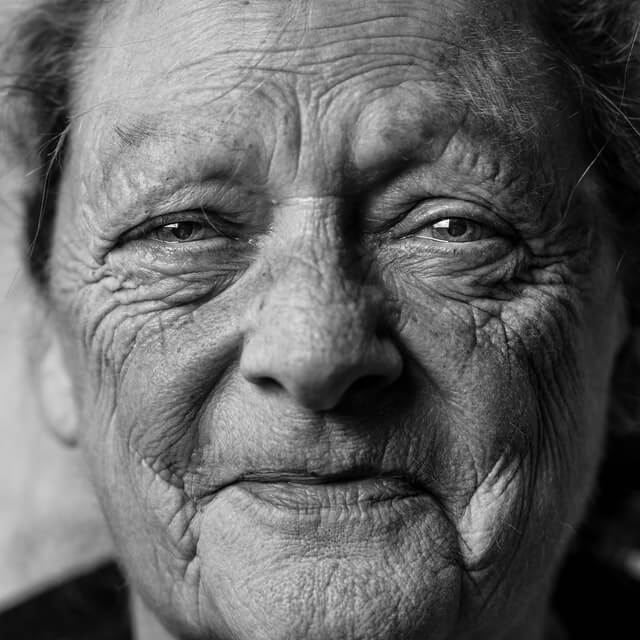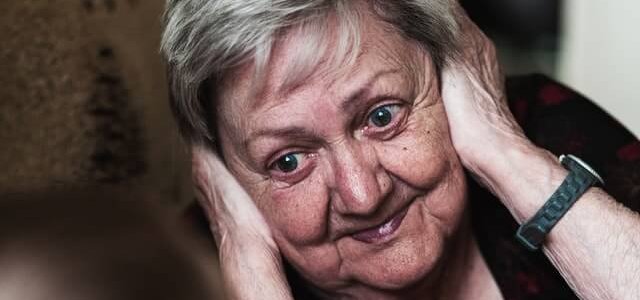As an individual with glaucoma, you should want to know the answer to some relatively straightforward questions:
- “What stage of glaucoma do I have?”
- “Is it mild or advanced?”
As an individual withSeems pretty simple, right? Shouldn’t every patient know the answer to this question? Yet anyone who has been to more than one glaucoma specialist knows that they will often get told “moderate” by one specialist whereas another will say they have “severe” glaucoma. What gives? Is one specialist ignorant? Possibly, but more likely they are both “correct” in their relative assessments, just using different systems to classify the severity of glaucoma.
So, why don’t all glaucoma specialists use the same system for consistency?
Simply put, because no one can agree on what parameters are most important for assessing glaucoma damage.
“Duh, visual fields”, you say?
OK, what part of the visual field? Mean deviation (MD)? Pattern Standard Deviation (PSD)? Visual Field Index (VFI)?
What about where the visual field defects are located? Shouldn’t more central defects be weighted more heavily than more peripheral defects?
All of it? OK, show me a physician that has time to enter (or has the budget to pay staff to enter) all that information into a “staging software package”–which would very likely not be free or its use reimbursed by insurance.
Then there’s the structural aspect of glaucoma (visual fields are “functional” tests, whereas OCT/photos are “structural”).
Doesn’t that have a role to play in staging? Depends on who you ask. Neither the government nor private insurance companies give two cents (literally or figuratively) about the structural staging of glaucoma. Given the limited time available to physicians, this means that both the financial and time-based incentives are for physicians to stage solely according to how billing codes define severity.
But is this clinically in the best interests of the patient? Probably not, which is why a LOT of effort has gone into creating a more relevant and nuanced method of staging glaucoma.
Take a look at just a few of the more commonly recognized methods of staging glaucoma severity:
Glaucoma – Classification of Severity
Most of the proposed systems of classification that primarily vary according to:
- Use of functional (visual field testing) versus structural (optic nerve photos or OCT) metrics
- Complexity (number of parameters needed to stratify)
Staging according to Pathophysiology
Shields Classification
Stage 1 - Initiating Events
- Genetic
- Trauma
- Inflammation
- Vascular event(s)
Stage 2 - Structural Alterations
- Tissue changes in outflow system (leading to elevated IOP)
- Modification to the extracellular matrix of the trabecular meshwork
- Physical blockage of trabecular meshwork (debris, scar tissue, etc.)
Stage 3 - Functional Alterations
- At some point the structural alterations result in a clinically significant change in functional characteristics (IOP, vascular perfusion)
Stage 4 - Retinal Ganglion Cell #RGC and Optic Nerve Damage
Stage 5 - Visual Loss
Strength(s) of Shields Classification:
Major weakness of Shields Classification:
- Although this system recognizes that there is a lot going on before the development of clinically evident glaucoma (stages 4 & 5), there is currently little that can be done to detect initiating events or alterations present in these stages
- Cannot currently be implemented clinically prior to stage 3

Staging according to Functional Damage
Mean Deviation Severity Staging
Informal “quick and dirty” staging “system” used by many general ophthalmologists and not infrequently used to stage glaucoma severity in clinical trials
Staging based on:
- Visual Field Mean Deviation (MD) Value
- The higher the absolute value of the MD, the worse glaucoma—yep, that’s it! Easy peasy.
Strength(s) of Mean Deviation Severity Staging:
- Only requires a visual field test
- Fast (only one metric to evaluate)
Major weakness of Mean Deviation Severity Staging:
- Mean deviation can be reduced by ocular pathology other than glaucoma
- Does not correlate well with visual disability
Glaucoma Staging System 2 (GSS2)
Uses BOTH Mean Deviation (MD) and Pattern Standard Deviation (PSD) from visual field printout
Strength(s) of GSS2:
- Relatively simple (can be mentally “ballparked” without referring to reference graph)
- Addresses some of the weaknesses of the Mean Deviation Severity Scale
Major weakness of GSS2:
- Not as nuanced as the systems that use more parameters to stage
- e.g., does not take into account location of visual field defect(s)

International Classification of Diseases (ICD) Staging of Glaucoma
Allows for staging of glaucoma into mild, moderate and severe disease _based simply on the physician’s analysis of the printout of the visual field_ in the patient’s worse eye.
Because this system has been forced upon physicians in both the US and Europe by both government and private insurance systems it is by default the system that is in most commonly use (at least by eye doctors who are not glaucoma specialists)
Mild
- No visual field abnormalities on any white-on-white visual field test or** abnormalities present only on short-wavelength automated perimetry or frequency-doubling perimetry
Moderate
- Visual field abnormalities in one hemifield, and not within 5 degrees of fixation
Severe (Advanced, End-Stage)
- Glaucomatous visual field abnormalities in both hemifields, and/or loss within 5 degrees of fixation in at least one hemifield
Strength(s) of ICD Classification:
- Simple and easy to determine
Major weakness of ICD Classification:
- Does not take structural damage into account
- Cannot stage in patients who are unable to perform high-quality visual field testing
Hodapp–Parrish–Anderson method
Staging based on:
- Visual Field Mean Deviation (MD) Value
- Number of depressed points in the pattern deviation map
- Proximity of defects to fixation point
Strength(s) of Hodapp–Parrish–Anderson method:
- More nuanced and likely more accurate representation of clinical severity of glaucoma
Major weakness of Hodapp–Parrish–Anderson method:
- Cumbersome & time-consuming
Mills et al. Staging System
Staging based on Hodapp–Parrish–Anderson method but uses five parameters instead of three
Strength(s) of Mills et al. Staging System:
- More nuanced and likely more accurate representation of clinical severity of glaucoma than even the Hodapp–Parrish–Anderson method
Major weakness of Mills et al. Staging System:
- Even more cumbersome & time-consuming than the Hodapp–Parrish–Anderson method
- Because of that is it rarely used by anyone outside of an academic glaucoma practice

AGIS Method
Staging based on the number of depressed points in various areas in the central visual field
Strength(s) of AGIS Method:
- Provides a score between 0 and 20
- Easy to compare scores
Major weakness of AGIS Method:
- Although the score is easy to compare, it is still a bit cumbersome to calculate
Systems for Staging Glaucoma based on OCT
Multiple systems have been proposed in the literature. None are widely in use or agreed upon.
Elbendary and Elal Three-Stage Method
Uses OCT RNFL measurements to stage
Strength(s) of Elbendary and Elal Three-Stage Method:
- Relatively simple
Major weakness of Elbendary and Elal Three-Stage Method:
- Requires OCT (expensive technology not available in all practices)
- Not glaucoma-specific (any optic neuropathy will increase severity scale)
Six-Stages OCT glaucoma staging system
Uses OCT RNFL measurements to stage
Strength(s) of Six-Stages OCT glaucoma staging system:
- Likely more sensitive and specific related to diagnosing/staging glaucoma than the Elbendary and Elal Three-Stage Method
Major weakness of Six-Stages OCT glaucoma staging system:
- Requires OCT (expensive technology not available in all practices)
– More involved than Elbendary and Elal Three-Stage Method so less likely to be used by busy clinicians
Systems for Staging Glaucoma based on BOTH Function and Structure
Complexity of system is the main drawback of any system using both function and structure
Global Glaucoma Staging System (GGSS)
[Website](https://www.mdpi.com/2077-0383/10/19/4414)
“plots structural and functional damage data on an x-y diagram in order to provide a standardized classification of the entire glaucomatous damage”
– Uses both OCT RNFL data and visual field data
Strength(s):
- Uses only 5 readily available parameters for patients with glaucoma:
- Age
- Mean Deviation (MD)
- Pattern Standard Deviation (PSD)
- Superior Quadrant RNFL thickness
- Inferior Quadrant RNFL thickness
- The only system to incorporate _both_ structural and functional damage metrics
- Uses objective measurements of optic nerve (OCT)
- Likely the most useful system of clinical staging
Major weakness:
- Requires OCT technology which may not be available in every practice
- Requires use of reference chart or proprietary software in order to stage individual patients
- As this system was first published in late 2021, most physicians are unaware of this method of staging
- Patented system so will likely require licensing software to implement which will effectively limit its use to academic centers or practices with large budgets for capital equipment
Summary
So as you can see, staging the severity of glaucoma is a hot mess with no universally agreed upon system of classification. Even were one system to be determined to be the “best” one, getting physicians to all use the same system is about as likely to be successful as herding cats. Add time demands and financial constraints and even the most “perfect” system will be left to collect metaphorical dust if it’s not fast and easy to use.
Thus, my expectation is that if you were to really press most eye doctors (not glaucoma specialists, but general ophthalmologists, cataract surgeons, and optometrists) about how they stage glaucoma, they’d probably shrug and answer something along the lines of, “I don’t know, I just look at the visual field, OCT, and optic nerve, and have a sense of how severe it is.” And, given our mind’s amazing ability to incorporate “fuzzy” data and recognize patterns, this system could very well beat out many of the more complicated systems described above in terms of meeting the demanding balance of efficiency and clinical relevance.
It’s not perfect, but at least for now, it seems to provide a ballpark assessment of glaucoma severity sufficiently close to the more formal system that have been proposed. After all, an imperfect system is far better than a “perfect” system that will not be universally implemented due to complexity, time, or cost.
References:
Brusini, P.; Johnson, C.A. Staging functional damage in glaucoma: Review of different classification methods. Surv. Ophthalmol. 2007, 52, 156–179.
Brusini, P.; Johnson, C.A. Staging functional damage in glaucoma: Review of different classification methods. Surv. Ophthalmol. 2007, 52, 156–179.


